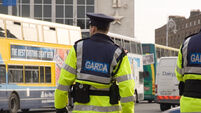CSO report finds surge in households living in enforced deprivation

The latest report from the Central Statistics Office showed that 6.4% of households had 'great difficulty' in making ends meet last year, with a further 10.4% having difficulty. File picture
The number of people living in "enforced deprivation" has surged in the past 12 months, with more than a tenth admitting they had to go without heat at some point because they couldn't afford it.
The latest report from the Central Statistics Office on the numbers living in enforced deprivation illustrates the ongoing impact of the cost-of-living crisis.
Enforced deprivation occurs where a household experiences two or more of the 11 national deprivation items. Those include:
- Being without heating at some stage in the last year
- Inability afford a morning, afternoon or evening out in last fortnight
- Inability to afford two pairs of properly fitting shoes in good condition that are suitable for daily activities
- Inability to afford a meal with meat, chicken, fish, or vegetarian equivalent every second day
- Inability to afford new (not second-hand) clothes
- Inability to afford a warm waterproof coat
The CSO data showed that the groups most likely to experience enforced deprivation were those who were unable to work due to long-standing health problems (44.7%); living in single-adult households with children under 18 (41.4%); unemployed (37.8%) and living in rented or rent-free accommodation (36.5%).
The deprivation rate increased for seven of the 11 deprivation items in 2023, with the inability to replace furniture (17.8%), being unable to have a get-together once a month (12.3%) and being unable to afford a morning, afternoon or evening out (11.8%) seeing the largest jumps compared to 2022.
Three in four households living in enforced deprivation found housing costs to be a heavy burden.
6.4% of households had 'great difficulty' in making ends meet last year, with a further 10.4% having difficulty. Of the rest, 31% said they had 'a little difficulty'.
It was a particular problem for renters, with 14.2% of rented households reporting that there was great difficulty in making ends meet compared with 2.8% of owner-occupied households.
Overall, people living in rented or rent-free accommodation were over four times more likely to be living in enforced deprivation as those in owner-occupied accommodation, with enforced deprivation rates of 36.5% and 8.8% respectively.
Of those unable to afford to keep their home adequately warm, 5% described themselves as employed, and a similar proportion (4.5%) were retired.
Over 30% of households considered housing costs to be a heavy financial burden in 2023. This rate was relatively unchanged from 2022, but up from 23% of households in 2021.
However, differences emerged between rented and owner-occupied households.
In 2023, just over 40% of rented households found housing costs to be a heavy financial burden, compared with almost 26% of owner-occupied households.
Up to 9.2% of rented households failed to make two or more rental payments on time in the past 12 months.
Of households that pay rent, 12% failed to make one or more rent payments on time. Rented households were also more likely to have arrears on utility bills with 15.2% of these households failing to make one or more utility bill payments on time in the past 12 months compared with 3.6% of owner-occupied households.













